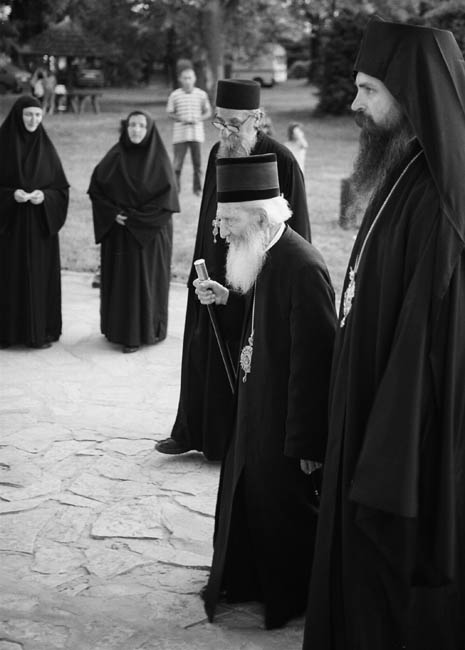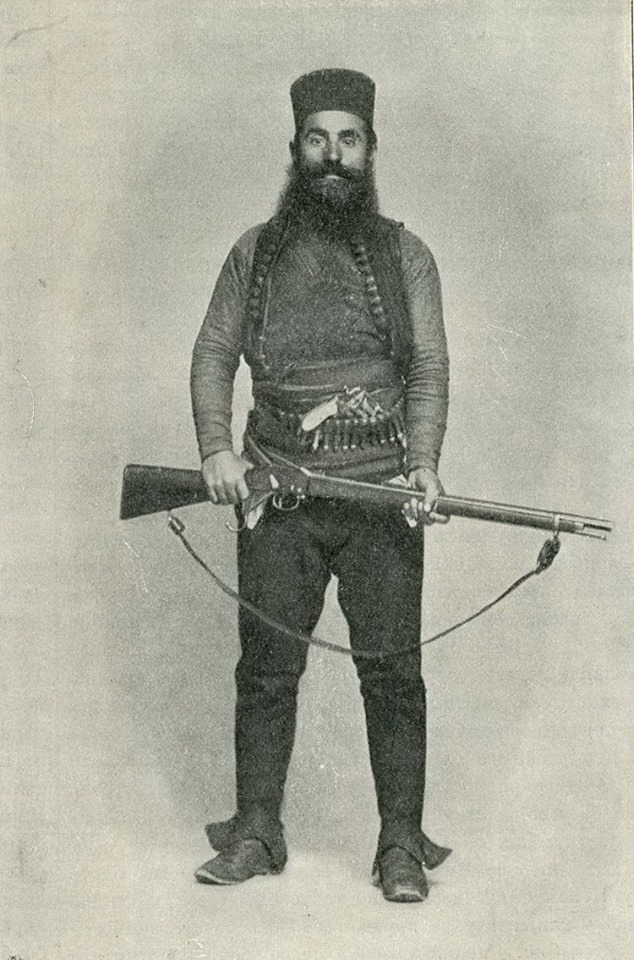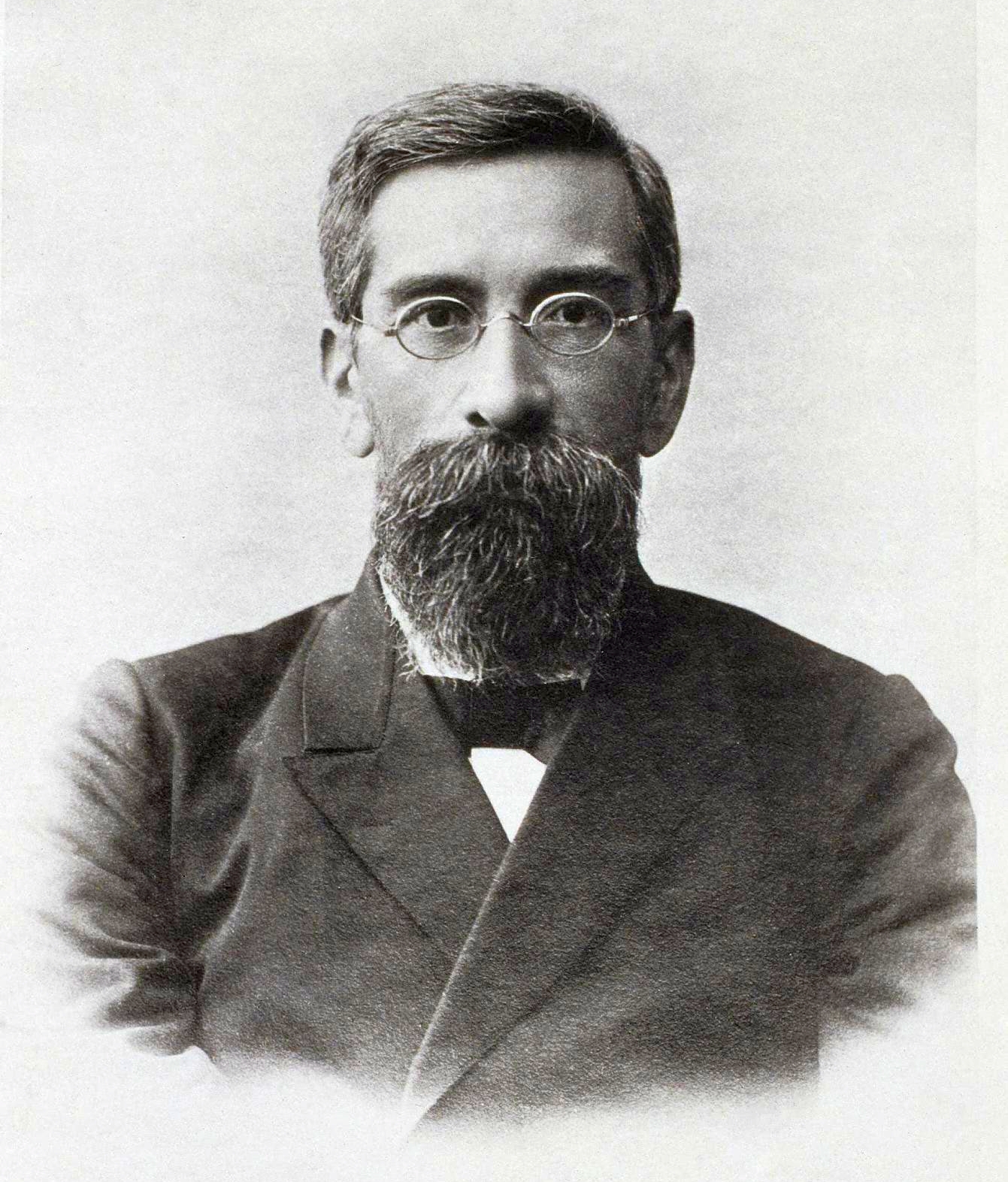|
Stevan Dimitrijević
Stevan Dimitrijević (10 January 1866 in Aleksinac – 24 November 1953 in Belgrade) was a Serbian theologian, historian and pastor to Chetnik freedom-fighter in Ottoman-occupied Old Serbia and Macedonia during the beginning of the 20th century. Biography He graduated from the theology department of the University of Belgrade and the Kiev Theological Academy. Upon his return in 1894 he was a professor in Skopje and Salonica, the rector of the Theology school in Prizren, a full-time professor of the University of Belgrade from 1920 to 1936 and the founder and first dean of the Theological Faculty in Belgrade. His students include bishop Nikolaj Velimirović, Varnava, Serbian Patriarch, Gavrilo V, Serbian Patriarch, German, Serbian Patriarch, Pavle, Serbian Patriarch and John of Shanghai and San Francisco. In 1937 he was awarded an honorary doctorate of the University of Athens. In Belgrade, in 1936, at Kolarac he was conferred an honorary doctorate in theology and became a member ... [...More Info...] [...Related Items...] OR: [Wikipedia] [Google] [Baidu] |
Stevan Dimitrijević
Stevan Dimitrijević (10 January 1866 in Aleksinac – 24 November 1953 in Belgrade) was a Serbian theologian, historian and pastor to Chetnik freedom-fighter in Ottoman-occupied Old Serbia and Macedonia during the beginning of the 20th century. Biography He graduated from the theology department of the University of Belgrade and the Kiev Theological Academy. Upon his return in 1894 he was a professor in Skopje and Salonica, the rector of the Theology school in Prizren, a full-time professor of the University of Belgrade from 1920 to 1936 and the founder and first dean of the Theological Faculty in Belgrade. His students include bishop Nikolaj Velimirović, Varnava, Serbian Patriarch, Gavrilo V, Serbian Patriarch, German, Serbian Patriarch, Pavle, Serbian Patriarch and John of Shanghai and San Francisco. In 1937 he was awarded an honorary doctorate of the University of Athens. In Belgrade, in 1936, at Kolarac he was conferred an honorary doctorate in theology and became a member ... [...More Info...] [...Related Items...] OR: [Wikipedia] [Google] [Baidu] |
Pavle, Serbian Patriarch
Pavle ( sr-cyr, Павле, ''Paul''; 11 September 1914 – 15 November 2009) was the patriarch of the Serbian Orthodox Church from 1990 to his death. His full title was ''His Holiness the Archbishop of Peć, Metropolitan of Belgrade and Karlovci, and Serbian Patriarch Pavle''. Before his death, he was the oldest living leader of an Eastern Orthodox church. Because of poor health, he spent his last years in the Military Medical Academy in Belgrade, while his duties were carried out by Metropolitan Amfilohije. Early life Pavle was born as Gojko Stojčević (Гојко Стојчевић) in the village of Kućanci near Magadenovac, then part of Austria-Hungary (present-day Croatia). He lost both of his parents in childhood, and was raised by an aunt. After finishing elementary school, Pavle graduated from a gymnasium in Belgrade, then studied at the seminary in Sarajevo. After finished Seminary, Gojko entered University of Belgrade where he studied Theology and Medicine ... [...More Info...] [...Related Items...] OR: [Wikipedia] [Google] [Baidu] |
Armed Priests
Throughout history, armed priests or soldier priests have been recorded. Distinguished from military chaplains who served the military or civilians as spiritual guidance (non-combatants), these priests took up arms and fought in conflicts (combatants). The term warrior priests or war priests is usually used for armed priests of the antiquity and Middle Ages, and of historical tribes. History In Greek mythology, the Curetes were identified as armed priests. In Ancient Rome, the Salii who were armed priests carried sacred shields through the city during the March festivals. Livy (59 BC–17 AD) mentions ''armati sacerdotes'' (armed priests). Medieval European canon law said that a priest could not be a soldier, and vice versa. Priests were allowed on the battlefield as chaplains, and could only defend themselves with clubs. The Aztecs had a vanguard of warrior priests who carried deity banners and made sacrifices on the battlefield. The warrior-priest was a common figure in the F ... [...More Info...] [...Related Items...] OR: [Wikipedia] [Google] [Baidu] |
Chetniks Of The Macedonian Struggle
The Chetniks ( sh-Cyrl-Latn, Четници, Četnici, ; sl, Četniki), formally the Chetnik Detachments of the Yugoslav Army, and also the Yugoslav Army in the Homeland and the Ravna Gora Movement, was a Kingdom of Yugoslavia, Yugoslav royalist and Serbian nationalist movement and Guerrilla warfare, guerrilla force in Axis powers, Axis-occupied Yugoslavia. Although it was not a homogeneous movement, it was led by Draža Mihailović. While it was anti-Axis in its long-term goals and engaged in marginal resistance activities for limited periods, it also engaged in tactical or selective Collaborationism, collaboration with the occupying forces for almost all of the war. The Chetnik movement adopted a policy of collaboration with regard to the Axis, and engaged in cooperation to one degree or another by establishing ''modus vivendi'' or operating as "legalised" auxiliary forces under Axis control. Over a period of time, and in different parts of the country, the movement was progre ... [...More Info...] [...Related Items...] OR: [Wikipedia] [Google] [Baidu] |
Serbian Theologians
Serbian may refer to: * someone or something related to Serbia, a country in Southeastern Europe * someone or something related to the Serbs, a South Slavic people * Serbian language * Serbian names See also * * * Old Serbian (other) * Serbians * Serbia (other) * Names of the Serbs and Serbia Names of the Serbs and Serbia are terms and other designations referring to general terminology and nomenclature on the Serbs ( sr, Срби, Srbi, ) and Serbia ( sr, Србија/Srbija, ). Throughout history, various endonyms and exonyms have bee ... {{Disambiguation Language and nationality disambiguation pages ... [...More Info...] [...Related Items...] OR: [Wikipedia] [Google] [Baidu] |
1866 Births
Events January–March * January 1 ** Fisk University, a historically black university, is established in Nashville, Tennessee. ** The last issue of the abolitionist magazine '' The Liberator'' is published. * January 6 – Ottoman troops clash with supporters of Maronite leader Youssef Bey Karam, at St. Doumit in Lebanon; the Ottomans are defeated. * January 12 ** The ''Royal Aeronautical Society'' is formed as ''The Aeronautical Society of Great Britain'' in London, the world's oldest such society. ** British auxiliary steamer sinks in a storm in the Bay of Biscay, on passage from the Thames to Australia, with the loss of 244 people, and only 19 survivors. * January 18 – Wesley College, Melbourne, is established. * January 26 – Volcanic eruption in the Santorini caldera begins. * February 7 – Battle of Abtao: A Spanish naval squadron fights a combined Peruvian-Chilean fleet, at the island of Abtao, in the Chiloé Archipelago of southern Chile. * February 13 � ... [...More Info...] [...Related Items...] OR: [Wikipedia] [Google] [Baidu] |
Alexander Soloviev (historian)
Alexander Vasilievich Soloviev (russian: Алекса́ндр Васи́льевич Соловьёв; sr, Александар Соловјев; 1890–1971) was a Russian émigré jurist, slavist, and historian of Serbia and Serbian law. His academic activity included research on the Bogumils, Serbian heraldry, philately and archeology, and he also published translations from Russian and French into Serbian. Having fled from Russia not long after the October Revolution, he settled in the Kingdom of Serbs, Croats and Slovenes, where he became a professor at the University of Belgrade Faculty of Law (1920-1936). After the end of World War II he briefly served as the first dean of the Sarajevo Law School (1947-1949), before Communist repression forced him to emigrate to Switzerland, where he worked as professor of Slavic studies at the University of Geneva (1951-1961). Biography Alexander Vasilievich Soloviev was born in 1890 in Kalisz, Congress Poland, part of the Russian E ... [...More Info...] [...Related Items...] OR: [Wikipedia] [Google] [Baidu] |
Vladimir Ćorović
Vladimir Ćorović ( sr-cyrl, Владимир Ћоровић; 27 October 1885 – 12 April 1941) was a Serbian historian, university professor, author, and academic. His bibliography consists of more than 1000 works. Several of his books on the history of Serbs, Bosnia, Yugoslavia and Herzegovina uprising are considered to be definitive works on the subject. Biography Education Vladimir Ćorović was born in Mostar in Herzegovina, then under Ottoman sovereignty but under Austro-Hungarian administration, to a prominent Serb Orthodox family involved in business. Ćorović finished primary school and the Gymnasium in Mostar, in which he was one of many future Serb intellectuals, among whom was also his brother the novelist Svetozar Ćorović. Ćorović continued his studies at the University of Vienna in 1904, studying Slavic Archaeology, History and Philology. He was active in the Serbian academic group „Zora“. Ćorović gained a Ph.D. in 1908 with a thesis on Lukijan ... [...More Info...] [...Related Items...] OR: [Wikipedia] [Google] [Baidu] |
Ljubomir Stojanović
Ljubomir Stojanović ( sr-cyr, Љубомир Стојановић, sometimes mentioned as ''Ljuba Stojanovic'') (6 August 1860, Užice – 16 June 1930) was a Serbian politician, philologist and academic. Biography Stojanović was a philologist and historian, who graduated from the School of Philosophy at the Grandes écoles ( sr, Велика школа, the ''Grandes Écoles''). After studies in Belgrade he went on to post-graduate studies in Vienna, St. Petersburg and Leipzig. At first a grammar school professor, he was appointed university professor at his ''alma mater'', the Grandes éecoles (1891-1899). Opposed to the royal absolutism of King Aleksandar I Obrenović, Stojanović joined the People's Radical Party of Nikola Pašić in 1897. After the split with the older generation of Radicals who accepted the compromise with the Crown in 1901, Stojanović led the younger group of Radicals, a semi-independent faction since 1901 which eventually became independent in 1905. ... [...More Info...] [...Related Items...] OR: [Wikipedia] [Google] [Baidu] |
Ljuba Kovačević
{{disambig, geo, given name ...
Ljuba may refer to: * Ljuba (given name), a Slavic given name * Ljuba, Serbia, a village in Syrmia, Vojvodina * 1062 Ljuba, an asteroid See also * Ljubav (other) Ljubav may refer to: * ''Ljubav'' (Ekatarina Velika album), 1987 * ''Ljubav'' (Trigger album), 2007 {{Disambiguation ... [...More Info...] [...Related Items...] OR: [Wikipedia] [Google] [Baidu] |
Nikodim Kondakov
Nikodim (or Nikodeme) Pavlovich Kondakov (russian: Никоди́м Па́влович Кондако́в; 1 (13) November 1844, Olshanka, Kursk Governorate, Russian Empire– 17 February 1925, Prague, Czechoslovakia), was an art historian with special expertise in the history of Russian and Serbian Christian icons. He is remembered as a pioneer among art historian who studied the trasures of Mount Athos like Frenchman Gabriel Millet. Biography Nicodem Pavlovitch Kondakov was born in the Russian Empire in 1844, in the village of Khalan in Kursk Governorate. He attended Moscow University under Fedor Buslaev from 1861 to 1865. After graduation he taught in the Moscow Art School. In 1870 he became a lecturer in the University of Novorossia, Odessa (now Odessa National University, Ukraine), and in 1877 a professor there. From 1888 he taught in St. Petersburg University. From 1893 he was a member of the Russian Academy of Fine Arts, and from 1898 a member of the Rus ... [...More Info...] [...Related Items...] OR: [Wikipedia] [Google] [Baidu] |
Gabriel Millet
Gabriel Millet (17 April 1867 – 8 May 1953) was a French archaeologist and historian. Biography After he passed his agrégation of history in 1891, Gabriel Millet became a member of the French School at Athens, then director of the École pratique des hautes études in religious sciences in 1899, and professor at the Collège de France in 1927. A voyager, he travelled throughout Europe, Greece, Macedonia, the Balkans. In 1906 Gabriel Millet, Vladimir Petković and Josef Strzygowski began research on Serbian painting, which they "acclaimed it to be among the finest creations of medieval Europe".After the trip he wrote books, including his university thesis, on the finding of his research in Serbia. Millet was the author of numerous books on Byzantine art. In 1930, in collaboration with Louis Bréhier, he led an archaeological mission to Mount Athos. He founded the series "Archives d'Athos" at the College de France, under the patronage of the Academie des Inscriptions et B ... [...More Info...] [...Related Items...] OR: [Wikipedia] [Google] [Baidu] |



